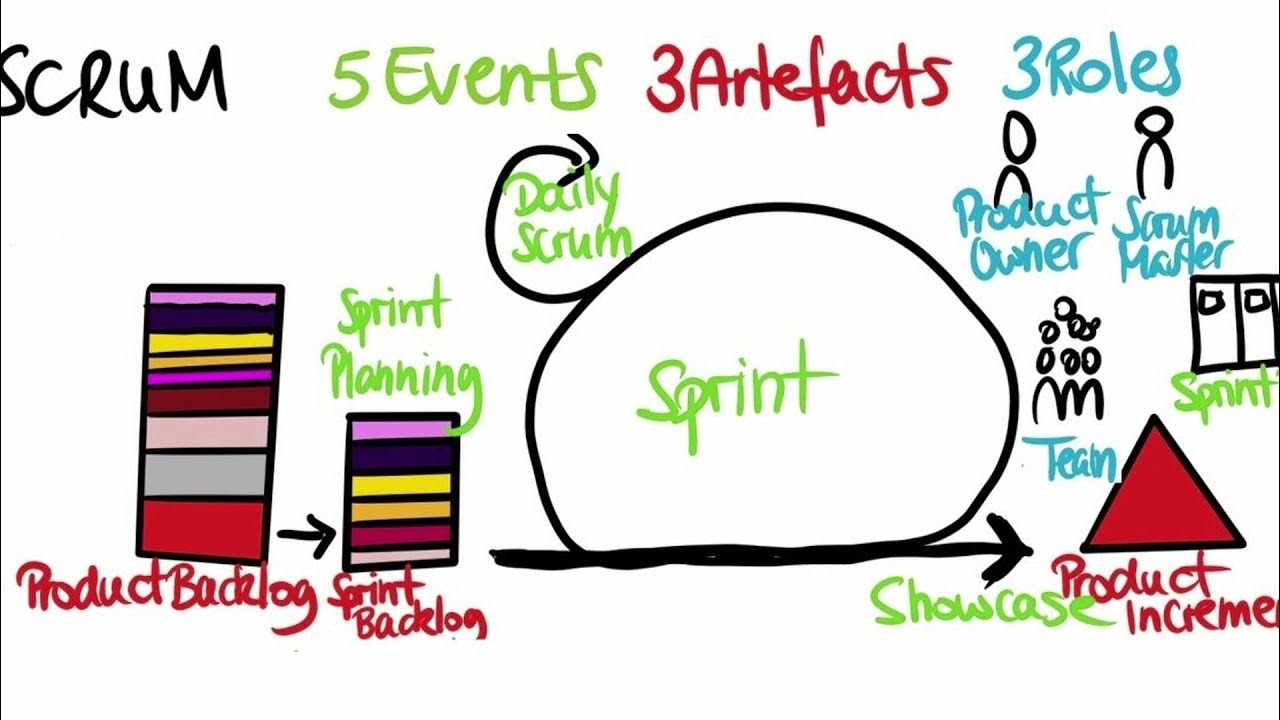How The Agile Manifesto Came To Be
Summary
TLDRJeff Sutherland, co-creador de Scrum y fundador de Scrum Inc., relata la historia detrás del Manifiesto Ágil y su reunión en 2001. Expone cómo 17 líderes del sector software eligieron 'Ágil' como término para describir sus procesos ligeros de desarrollo, impulsados por la necesidad de mejorar la eficiencia y la interacción con los clientes. Detalla cómo se formularon los cuatro valores del manifiesto y los 12 principios que los amplían, destacando la importancia de la colaboración con el cliente y la entrega incremental de productos. Sutherland también comenta la expansión de Scrum más allá del desarrollo de software.
Takeaways
- 🌟 Scrum fue creado por Jeff Sutherland, quien también co-fundó el manifiesto ágil y Scrum Inc.
- 📅 En 2001, el manifiesto ágil se firmó en Utah, marcando el inicio de una nueva era en el desarrollo de software.
- 🧠 Participaron 17 pensadores líderes en la industria, quienes buscaban mejorar los procesos de desarrollo de software.
- 🏔️ El término 'ágil' fue propuesto por Mike Beedle durante la reunión del manifiesto ágil, inspirado por el libro sobre compañías de hardware ágil.
- 🗣️ Durante la reunión, se enfatizó la importancia de la colaboración con el cliente y la adaptabilidad frente a seguir un plan.
- 📝 Se redactaron 12 principios que amplían y aclara los valores del manifiesto ágil, enfocándose en la priorización del cliente y la entrega incremental.
- 🔄 La adopción del manifiesto ágil y Scrum se expandió rápidamente, con Scrum llegando a dominar el 80% del mercado.
- 🌐 Scrum demuestra su capacidad para escalar y funcionar tanto en entornos presenciales como remotos.
- 📚 Otros procesos ágiles como Extreme Programming también tuvieron un impacto significativo en la industria.
- 🤝 A pesar de las diferencias iniciales, todos los participantes en la reunión del manifiesto ágil estuvieron de acuerdo con los cuatro valores y los 12 principios.
Q & A
¿Quién es Jeff Sutherland y qué contribución tuvo en Scrum?
-Jeff Sutherland es el co-creador de Scrum, el fundador de Scrum Inc y el creador de Scrum at Scale.
¿En qué año tuvo lugar la reunión del Agile Manifesto y dónde se llevó a cabo?
-La reunión del Agile Manifesto tuvo lugar en 2001 en Snowbird, Utah.
¿Cuál fue el propósito de la reunión del Agile Manifesto?
-El propósito de la reunión fue discutir y trabajar en procesos ágiles de desarrollo de software y cómo cambiar la forma en que se trabajaba en el sector del software.
¿Quién propuso la palabra 'ágil' durante la reunión del Agile Manifesto?
-La palabra 'ágil' fue propuesta por Mike Beedle durante la primera jornada de la reunión del Agile Manifesto.
¿De qué libro tomó Mike Beedle inspiración para proponer la palabra 'ágil'?
-Mike Beedle tomó inspiración de un libro sobre compañías de hardware ágil que discutía cómo hacer que el enfoque Lean fuera más adaptable al entorno.
¿Cuál fue el resultado de la primera jornada de la reunión del Agile Manifesto?
-El resultado fue la elección de la palabra 'ágil' para describir el enfoque conjunto que se estaba desarrollando.
¿Qué significaba el término 'Lean' en el contexto de la reunión del Agile Manifesto?
-En el contexto de la reunión del Agile Manifesto, 'Lean' se refería a un enfoque de eficiencia y eliminación de desperdicio, pero que necesitaba involucrar directamente a los clientes en la creación del producto para ser más adaptable.
¿Cuál fue la principal preocupación de Martin Fowler durante la segunda jornada de la reunión del Agile Manifesto?
-La preocupación principal de Martin Fowler era que el grupo no estuviera de acuerdo en algo, por lo que escribió en el tablero 'individuos e interacciones' para enfocarse en lo que todos podrían valorar.
¿Cuál fue la frase que escribió Martin Fowler en el tablero durante la reunión del Agile Manifesto?
-Martin Fowler escribió en el tablero 'individuos e interacciones sobre procesos y herramientas'.
¿Qué valor se consideró más importante que la documentación durante la reunión del Agile Manifesto?
-Se valoró más la entrega temprana y regular de software funcional que la documentación exhaustiva.
¿Cuál fue la discusión clave que se tuvo durante la reunión del Agile Manifesto sobre la relación con el cliente?
-Se discutió que la colaboración con el cliente era más importante que la negociación contractual, lo que se reflejó en uno de los valores del Agile Manifesto.
¿Cómo se sintieron los asistentes a la reunión del Agile Manifesto después de que los nueve que habían salido tomaron un descanso y vieron el tablero?
-Cuando los nueve asistentes que habían salido tomaron un descanso regresaron y vieron el tablero, hubo un momento de silencio y asombro, y Ward Cunningham, quien había inventado el wiki, dijo que era impresionante y nadie cambió una palabra.
¿Cuánto tiempo tomó desarrollar los 12 principios que amplían y aclara los valores del Agile Manifesto?
-Tomó varias horas desarrollar los 12 principios que acompañan a los valores del Agile Manifesto.
¿Cómo se relaciona Scrum con el Agile Manifesto y qué importancia tiene en el mercado actual?
-Scrum es un marco de trabajo ágil que se ha escalado a cualquier tamaño y se ha implementado en muchas empresas. Hoy en día, Scrum representa alrededor del 80% del mercado de desarrollo de software.
Outlines

Cette section est réservée aux utilisateurs payants. Améliorez votre compte pour accéder à cette section.
Améliorer maintenantMindmap

Cette section est réservée aux utilisateurs payants. Améliorez votre compte pour accéder à cette section.
Améliorer maintenantKeywords

Cette section est réservée aux utilisateurs payants. Améliorez votre compte pour accéder à cette section.
Améliorer maintenantHighlights

Cette section est réservée aux utilisateurs payants. Améliorez votre compte pour accéder à cette section.
Améliorer maintenantTranscripts

Cette section est réservée aux utilisateurs payants. Améliorez votre compte pour accéder à cette section.
Améliorer maintenantVoir Plus de Vidéos Connexes
5.0 / 5 (0 votes)






